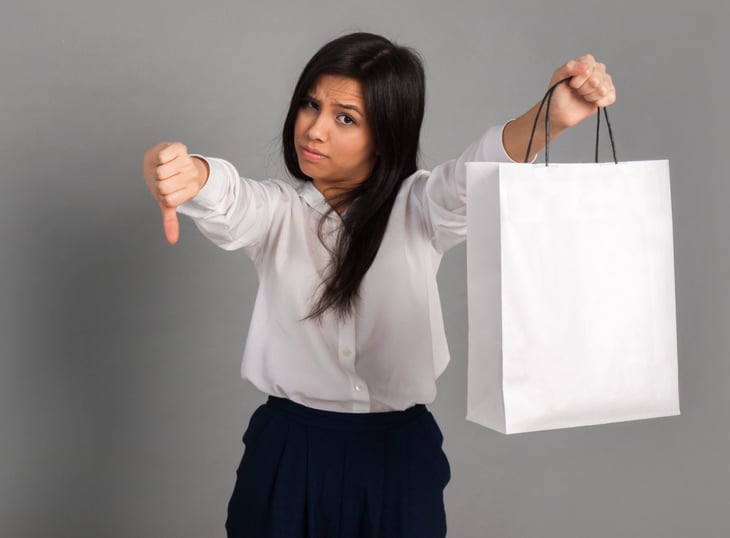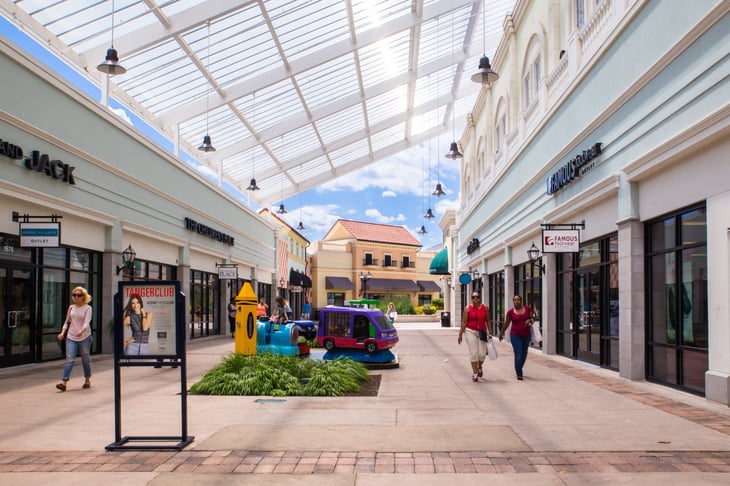
Editor's Note: This story originally appeared on Living on the Cheap.
With the holiday season approaching, now is as good a time as any to review what we’re really getting at outlet stores. This isn’t meant to discourage people from shopping at outlets; it’s just to advise and to make us better shoppers.
Overall, you can save money at an outlet store. The same principles that apply to regular shopping apply at an outlet store. You need to know what you’re buying and how much it should cost.
Once upon a time, when you went to an outlet store you were getting the factory overruns, unsold items, out-of-season items and damaged merchandise that once hung in the retail store. Shopping at the outlet was a hit-or-miss proposition.
The racks sometimes held only one or two of an item. All the tags were clearly marked down, with multiple price stickers layered on top of each other with increasingly lower prices. Sometimes the clothing tags were cut to indicate that it was outlet merchandise.
Most major retailers had a few outlet stores scattered around the country. Many were located far outside metropolitan areas, often in nearly unmarked and not-so-glamorous strip malls.
These outlets were purposely placed in out-of-the-way places so they would not compete with the retail stores. Despite the almost rundown quality of some of these stores, you really got a $60 jacket that once hung on a rack in the retail store for $20.
Somewhere along the line that all changed.
Modern outlet stores

Computerized inventory management helped retailers better manage their inventory. This reduced the amount of excess inventory that would end up being sold at outlets.
Retailers realized that there was a market for their brands at a lower price point. Nowadays retailers have multiple “outlet” stores in every major metropolitan area of the United States and even overseas, so they have to fill the racks with something.
Where does outlet store merchandise come from?

One source is called made-for-factory merchandise. Outlet stores are stocked with goods manufactured specifically for the outlet stores.
The retailers are making lower-cost and lower-quality knockoffs of their own full-price merchandise using different fabric, stitching, buttons and zippers.
Another type of outlet merchandise is private label. This is merchandise manufactured with the retailer’s name on the label, but you will never see it in the full-price retail store. Again, the quality is lower, and that’s why it costs less.
Four members of Congress who asked the Federal Trade Commission to investigate said that “upwards of 85%” of all outlet merchandise falls into these two categories.
Most people do not realize this. You think you’re getting a great deal on full-price merchandise when in reality you’re getting a lower-quality knock-off.
Some stores readily admit to what they’re selling. Neiman Marcus Last Call Studio is up-front about selling almost entirely factory-made and private label merchandise.
How much are we saving?

When you look at an outlet store price tag, what does it mean? What does the “compared to” price really mean? How much money are we really saving?
To some extent that depends on where you live, since some states have laws about what can appear on a price tag.
In reality, the items may never have been sold for the manufacturer’s suggested retail price, “compared to” price, suggested retail price, and so forth.
Marshalls and TJ Maxx stores — both owned by the same company — actually approximate what an outlet store used to be. They carry discounted designer goods, but with more than 2,100 stores, they have to be selling other merchandise as well.
The company says “we take advantage of a wide variety of opportunities, which can include department store cancellations, a manufacturer making up too much product, or a closeout deal when a vendor wants to clear merchandise at the end of a season.”
In addition, “we also have some merchandise manufactured for us to bring you exceptional fashion and quality at an amazing price.”
A word about ‘outlet’ malls

An outlet mall is a shopping center in which most of the individual tenants are owner-operated outlets. What that means is that some of the stores in an outlet mall are actually regular retail stores.
When an outlet mall is being developed, the developers require tenants, through their leases, to sell a certain percentage of merchandise at a discount compared with retail-store prices. This means that at some outlet stores, only some of the merchandise is being sold at a discount.
How to get a real deal

- Understand what you are buying. Be aware that the product at the outlet may not be the same quality as the merchandise in the full-price retail store. Visit a full-price store before the outlet to examine the quality of the full-price merchandise.
- Know what things cost. Visit a full-price store before the outlet to check prices. Do not rely on the tags on merchandise at the outlet store. You may be saving money, but the MSRP on the tag is only an estimate.
- Shop discounters, but be aware that they are selling made-for-factory items also.
- Be patient and shop traditional retailer sales. Shop at holiday, clearance and end-of-season sales. When shopping sales, use store coupons and discounted gift cards. You can save as much or more than at the outlet.
- Subscribe to retailers’ newsletters. Sign up for emails from retailers to get in on regular sales and flash sales. Set up a secondary email address so these don’t clog up your regular email.
- Shop designer flash sales at Beyond the Rack, Rue La La, Gilt, Zulily and more.
- Consider buying fewer clothes and buy higher-quality items on sale. Take proper care of them so they last longer.
- Shop at high-end resale and thrift shops. I have bought Ralph Lauren pants with the tags still on at a thrift store.
Other ways to save on shopping

- Check the retailer’s website for current sales before you go.
- Join the loyalty programs for your favorite stores to receive special coupons and sales information.
- Most outlet malls offer a free coupon book. Download it before you go so you don’t have to find the visitor center.
- If you go to Oregon, Alaska, Delaware, Montana or New Hampshire, leave room in your suitcase because they have no state sales tax, though there may be city sales taxes in Alaska. I’ve bought high-ticket items like Bose headphones, my current laptop and clothing in Oregon. Depending on your local sales tax, you are saving 6% to 10%, and more if you catch a sale.





Add a Comment
Our Policy: We welcome relevant and respectful comments in order to foster healthy and informative discussions. All other comments may be removed. Comments with links are automatically held for moderation.